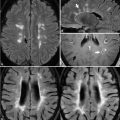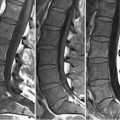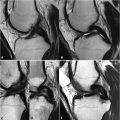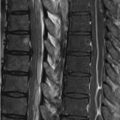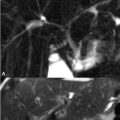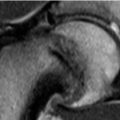69 Adrenal Disease MRI is useful in localizing and characterizing masses of the adrenal gland due to its ability to detect fat content of a lesion. Like spectral fat suppression techniques, in- and out-of-phase GRE T1WI sequences exploit differential resonance frequencies of fat and water protons. Within a given voxel immediately following an initial RF excitation pulse (i.e., the factor enabling T1 and T2 relaxation) both lipid and water protons are in phase. Due to their differing resonance frequencies, however, the relative phases of water and fat protons begin to immediately change. TE can thus be selected such that water and fat protons are completely in- or out-of-phase with each other. In the latter case, SI from such protons cancel, manifesting as low SI on out-of-phase images. Voxels solely possessing water or fat protons, however, appear relatively unchanged on out-of-phase images. In practice, in- and out-of-phase images are typically obtained as part of a double-echo sequence, an approach for which clinical utility rests on the selection of a relatively short TE for out-of-phase images: GRE is sensitive to T2* effects, which will be more pronounced at longer TEs. Thus, losses in SI from T2* decay may masquerade as SI dropout from fat on out-of-phase images obtained with a long TE. Figures 69.1A and 69.1B illustrate a homogeneous left adrenal lesion on in- and out-of-phase GRE T1WI, respectively. On the former, the lesion is isointense to the liver. Lesion SI decreases significantly on (B) out-of-phase GRE T1WI owing to SI dropout— due to the presence of fat and water within the same voxel as described above. These features are characteristic of a benign adrenal adenoma. Out-of-phase images are identifiable by the prominent outlining of masses or organs at their interface with fat by a thin artificial low signal intensity line (“etching” artifact). This is appreciable in the out-of-phase GRE T1WI of Fig. 69.1B
![]()
Stay updated, free articles. Join our Telegram channel

Full access? Get Clinical Tree


